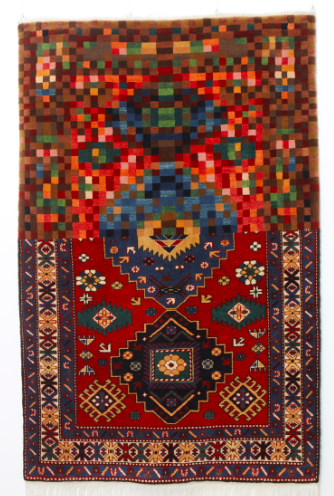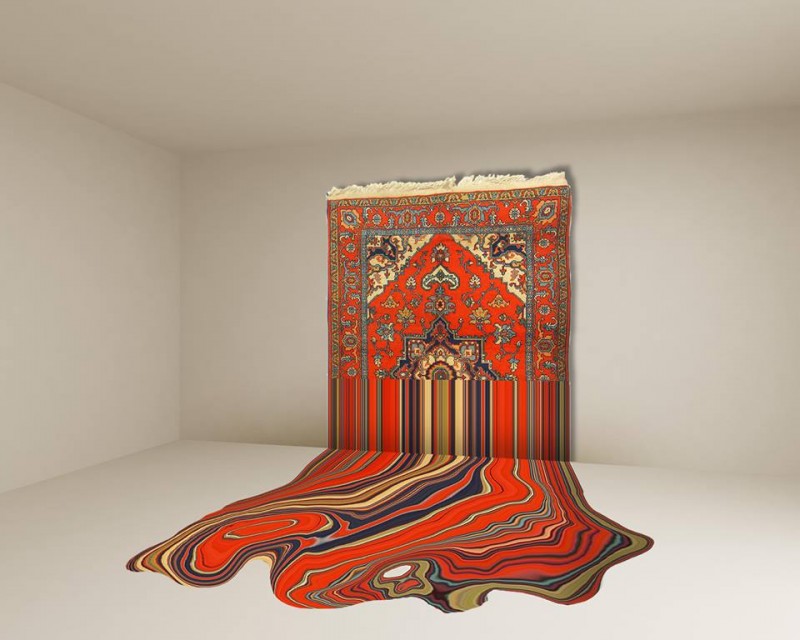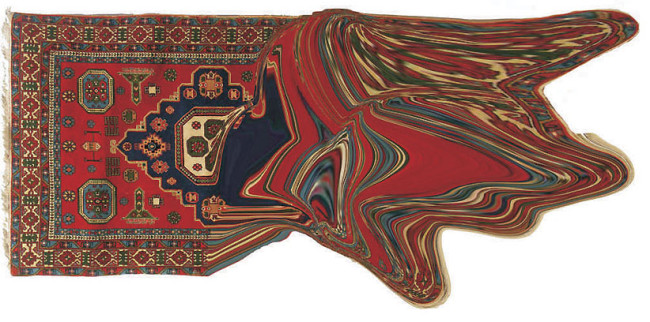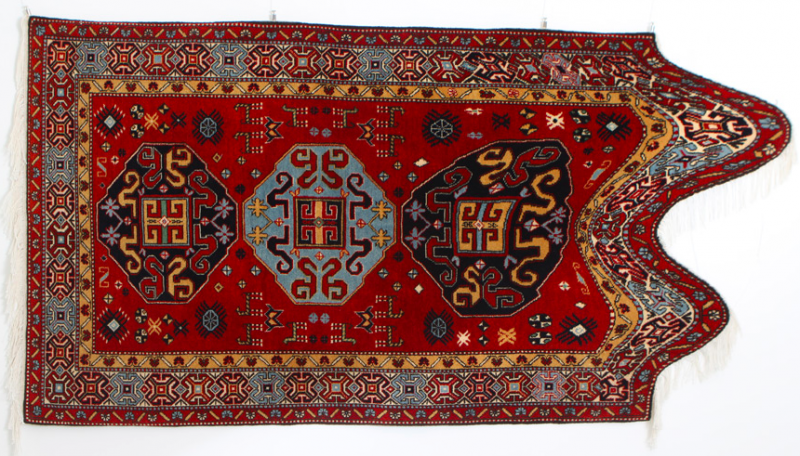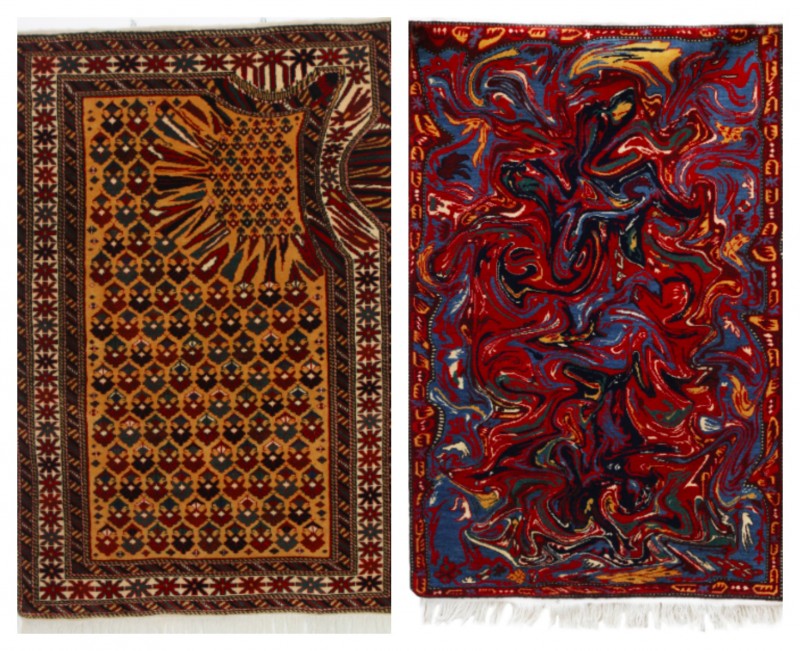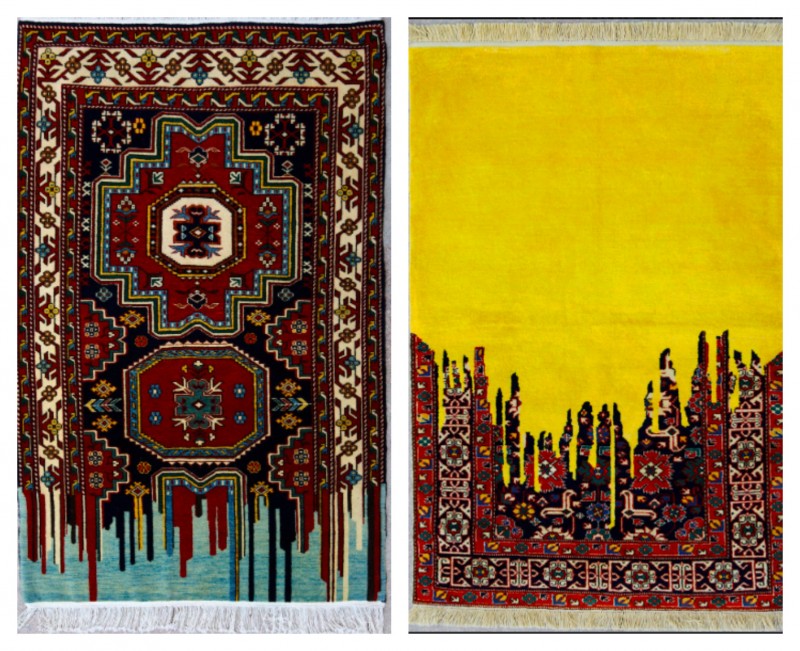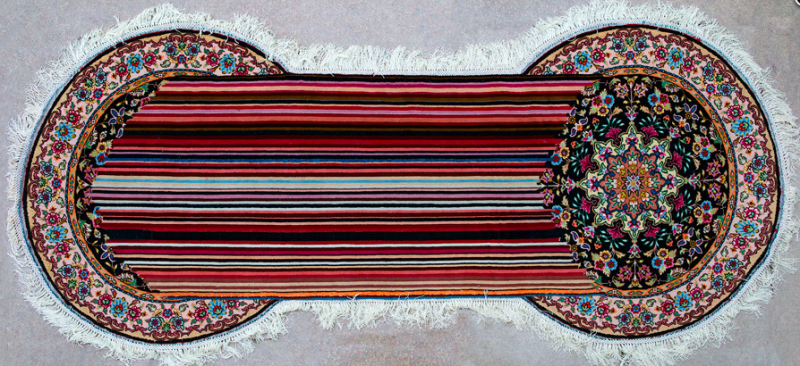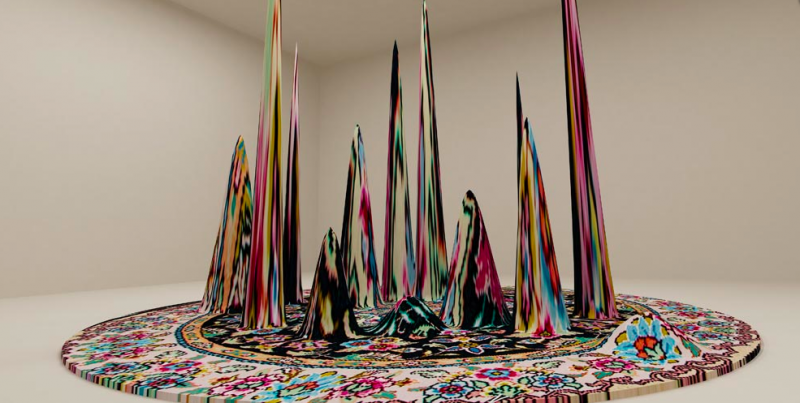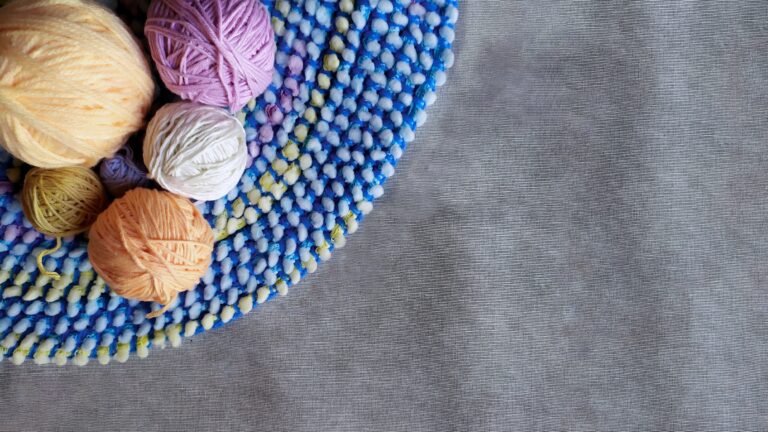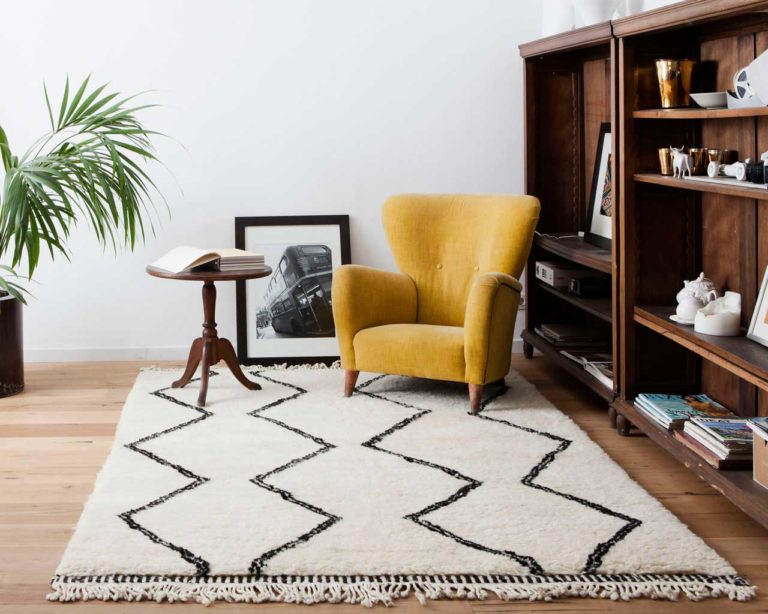Azerbaijan Rugs: Lost Traditions or New Art?
In 1915 Kazimir Malevich painted his famous “Black Suprematic Square” and by doing so he put a bold line between the old and the new art. He basically has depicted how this “new art” will look like: primitive, provocative and ugly. All accumulated during many centuries traditions were nullified. In fact his painting informed us that in new art we will not see Mona Lisa, Danaë or Venus. Moreover we don’t need them anymore. The most important thing is to surprise, to entertain and to shock the public – then, we will forget about such things as the aesthetics and the artistic value.
When I first saw one of the carpets created by Faig Ahmed in one of the magazines I thought that it was a bug of computer, which pixelated the image of traditional oriental rug. It turned out that this is the new generation of Azerbaijani carpets.
It is very sad, but it looks like that traditional carpet-weaving in Caucasus is dead. Since Latif Kerimov (1906-1991), nobody has ever created a new design of Azerbaijani rug. All what we can see now is distorted image of traditional ornaments. In fact they are so much deformed that you hardly can understand what kind of design it was. That’s probably why, Faig Ahmed usually leaves half of a carpet untouched – at least we can guess how it looked like, before he converted it in the awkward colourful mess.
I do not argue – all what Faig Ahmed creates looks very impressive. But I doubt that his carpets will look good anywhere except modern art museums. Extravagant? Yes. Beautiful? I doubt so. In fact, I think that he doesn’t create anything new. All his works are reinterpreted versions of old masterpieces. It is the same as if I take one of the most famous paintings, let’s say La Gioconda, and depict her face pixelated.
In conclusion: traditional Azerbaijani rugs created in 18th-19th centuries now cost hundreds of thousands and each year become more and more expensive, because they are… beautiful. It is interesting to see what will happen with the carpets below in hundred or two hundred years time. Would they be the same popular as they are now? What do you think?

